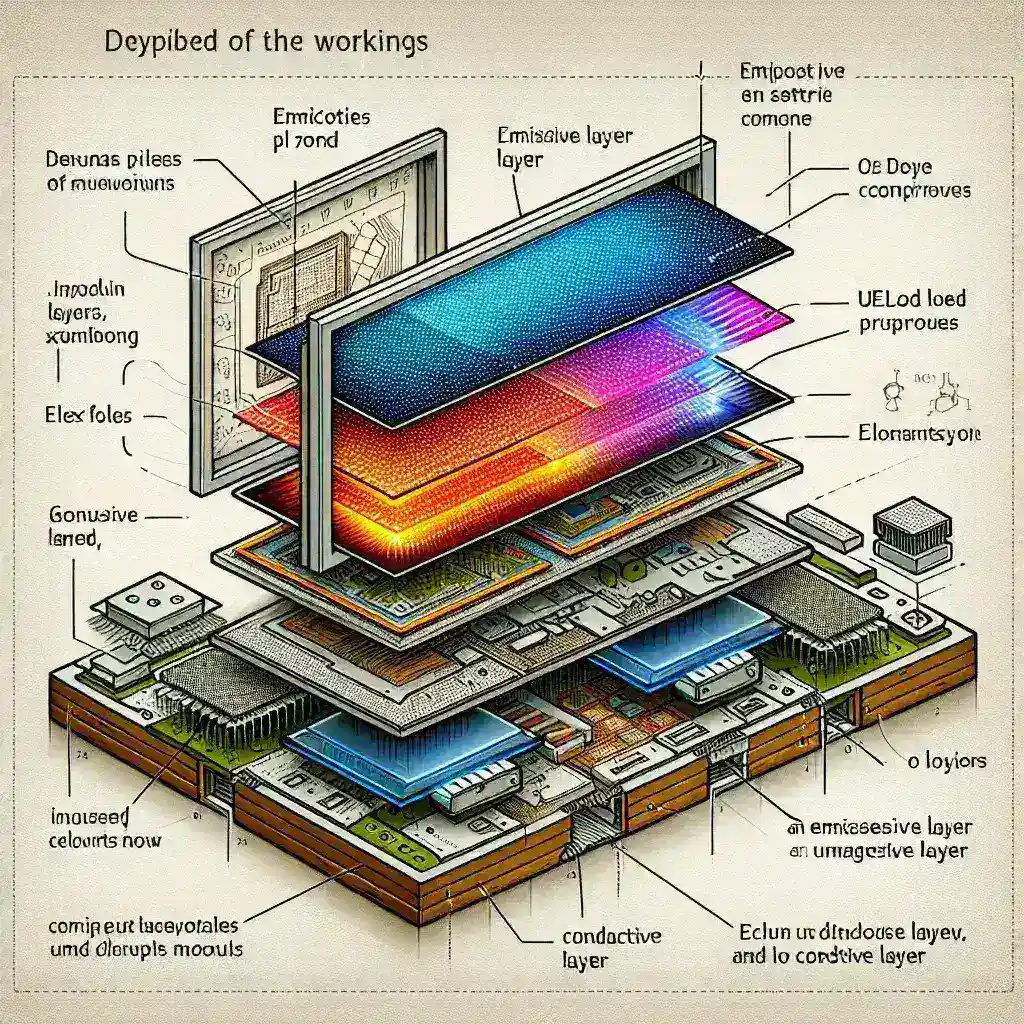Introduction to OLED Monitors
OLED, short for Organic Light Emitting Diode, technology revolutionized the display industry by introducing self-emitting diodes that offer unparalleled color accuracy and contrast ratios. Unlike traditional LCD monitors, OLEDs do not require a backlight, making them thinner, more flexible, and more energy-efficient. But how do these monitors work exactly? Let’s dive into the fascinating world of OLED technology.
How OLED Technology Works
The fundamental principle behind OLED technology is the emission of light by organic compounds when an electric current is applied. Here’s a step-by-step breakdown of how an OLED monitor operates:
Structure of an OLED Pixel
Each OLED pixel consists of several layers:
- Substrate: Serves as the foundational layer and can be made of glass or plastic.
- Anode: A transparent layer that removes electrons, leaving behind positive electric holes.
- Organic Layers: Comprising conductive and emissive layers, these are responsible for the light emission when an electric current is applied.
- Cathode: Another transparent layer that injects electrons into the organic layers.
Working Mechanism
When an electric current passes through the OLED:
- The anode removes electrons, creating positive holes.
- Electrons are injected from the cathode into the emissive layer.
- These electrons and holes combine in the emissive layer, releasing energy in the form of photons (light).
Color Production
The color of the light emitted depends on the materials used in the emissive layer:
- Red, green, and blue: Utilizing different organic compounds can produce the primary colors required for high-definition displays.
- White light: Combining these primary colors in precise proportions results in white light.
Advantages of OLED Monitors
OLED monitors come with several benefits:
- Superior Contrast: Since OLEDs can turn off individual pixels, they offer true blacks, resulting in an infinite contrast ratio.
- Energy Efficiency: Without a backlight, OLED monitors consume less energy, especially when displaying darker images.
- Flexible and Thin Design: OLED panels can be extremely thin and even flexible, opening doors to innovative form factors.
- Wide Viewing Angles: Unlike LCDs, OLEDs maintain color accuracy and brightness from virtually any angle.
Challenges and Limitations
Despite numerous advantages, OLED technology has its challenges:
- Burn-in: Prolonged display of static images can cause permanent pixel degradation.
- Cost: OLED panels are generally more expensive to manufacture than their LCD counterparts.
- Lifespan: Organic materials have a shorter lifespan, especially the blue OLEDs, which can degrade quicker.
Comparison with Other Technologies
How do OLED monitors stack up against other display technologies? Let’s compare:
| Feature | OLED | LCD | LED |
|---|---|---|---|
| Contrast Ratio | Infinite | 1,000:1 to 3,000:1 | 3,000:1 to 10,000:1 |
| Energy Efficiency | High | Medium | Medium to High |
| Viewing Angles | Wide | Limited | Moderate |
| Cost | High | Low to Medium | Medium |
| Panel Thickness | Thin | Thicker | Medium |
Future of OLED Monitors
Despite some challenges, OLED technology continues to advance. Innovations like micro-OLED and improvements in organic material longevity are promising for the future. Moreover, as production processes become more efficient, costs are expected to decrease.
Conclusion
OLED technology offers a remarkable leap in display quality with its vibrant colors, deep blacks, and efficient energy consumption. While challenges like cost and burn-in still exist, the technology’s advancements promise a bright future for OLED monitors in various applications.

